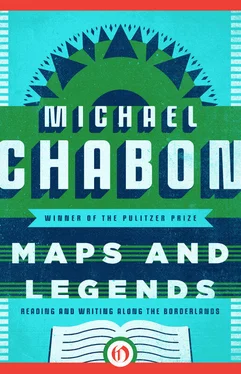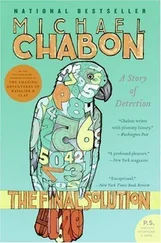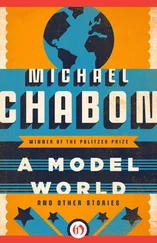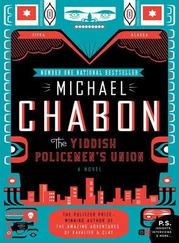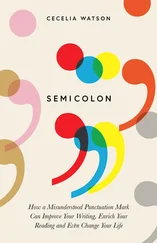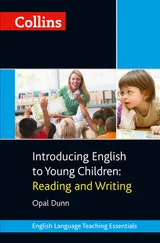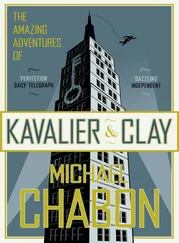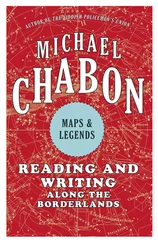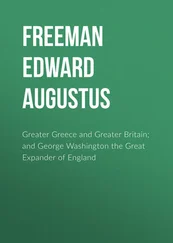Children did not abandon comics; comics, in their drive to attain respect and artistic accomplishment, abandoned children. And for a long time the lovers and partisans of comics were afraid, after so many years of struggle and hard work and incremental gains, to pick up that old jar of greasy kid stuff again, and risk undoing all the labor of so many geniuses and revolutionaries and ordinary, garden-variety artists. Comics have always been an arriviste art form, and all upstarts are to some degree ashamed of their beginnings. But shame, anxiety, the desire to preserve hard-won gains — such considerations no longer serve to explain the disappearance of children’s comics. The truth is that comic-book creators have simply lost the habit of telling stories to children. And how sad is that?
When commentators on comics address this question, in the hope of encouraging publishers, writers, and artists to produce new comic books with children in mind, they usually try formulating some version of the following simple equation: create more child readers now, and you will find yourselves with more adult readers later on. Hook them early, in other words. But maybe the equation isn’t so simple after all. Maybe what we need, given the sophistication of children (if we want to concede that point) and the competition for their attention and their disposable income (which has always been a factor), is not simply more comics for kids, but more great comics for kids.
Easy, I suppose, for me to say. So although I am certain that there are many professional creators of comics — people with a good ear and a sharp eye for and a natural understanding of children and their enthusiasms — who would be able to do a far better job of it, having thrown down the finned, skintight gauntlet, I now feel obliged to offer, at the least, a few tentative principles and one concrete suggestion on how more great comics for kids might be teased into the marketplace, even by amateurs like me. I have drawn these principles, in part, from my memories of the comics I loved when I was young, but I think they hold true as well for the best and most successful works of children’s literature.
1) Let’s not tell stories that we think “kids of today” might like. That is a route to inevitable failure and possible loss of sanity. We should tell stories that we would have liked as kids. Twist endings, the unexpected usefulness of unlikely knowledge, nobility and bravery where it’s least expected, and the sudden emergence of a thread of goodness in a wicked nature, those were the kind of stories told by the writers and artists of the comic books that I liked.
2) Let’s tell stories that, over time, build up an intricate, involved, involving mythology that is also accessible and comprehensible at any point of entry. The intricacy, the accretion of lore over time, should be both inventive and familiar, founded in old mythologies and fears but fully reinterpreted, reimagined. It will demand, it will ache, to be mastered by a child’s mythology-mastering imagination. The accessibility will come from our making a commitment to tell a full, complete story, or a complete piece of a story, in every issue. this kind of layering of intricate lore and narrative completeness was a hallmark of the great “Superman-family” books ( Adventure, Jimmy Olsen, Superboy ) under the editorship of Mort Weisinger.
3) Let’s cultivate an unflagging readiness as storytellers to retell the same stories with endless embellishment. Anybody who thinks that kids get bored by hearing the same story over and over again has never spent time telling stories to kids. The key, as in baroque music, is repetition with variation. Again the Mort Weisinger-edited Superman books, written by unflagging storytellers like Edmond Hamilton and Otto Binder, were exemplary in this regard. The proliferation of theme and variation there verges, at times, on sheer, splendid madness.
4) Let’s blow their little minds. A mind is not blown, in spite of whatever Hollywood seems to teach, merely by action sequences, things exploding, thrilling planetscapes, wild bursts of speed. Those are all good things; but a mind is blown when something that you always feared but knew to be impossible turns out to be true; when the world turns out to be far vaster, far more marvelous or malevolent than you ever dreamed; when you get proof that everything is connected to everything else, that everything you know is wrong, that you are both the center of the universe and a tiny speck sailing off its nethermost edge.
So much for my principles: here is my concrete suggestion. If it seems a little obvious, or has already been tried and failed, then I apologize. But I cannot help noticing that in the world of children’s literature, an overwhelming preponderance of stories are stories about children. The same is true of films for children: the central characters are nearly always a child, or a pair or group of children. Comic books, however, even those theoretically aimed at children, are almost always about adults or teenagers. Doesn’t that strike you as odd? I suggest that a publisher should try putting out a truly thrilling, honestly observed and remembered, richly imagined, involved and yet narratively straight-forward comic book for children, about children.
My oldest son is ten now, and he likes comic books. In 1943, if you were a ten-year-old, you probably knew a dozen other kids your age who were into Captain Marvel and the Submariner and the Blue Beetle. When I was ten, in 1973, I knew three or four. But in his class, in his world, my son is all but unique; he’s the only one he knows who reads them, studies them, seeks to master and be worthy of all the rapture and strangeness they still contain. Now, comic books are so important to me — I have thought, talked, and written about them so much — that if my son did not in fact like them, I think he would be obliged to loathe them. I have pretty much forced comics on my children. But those of us who grew up loving comic books can’t afford to take this handcrafted, one-kid-at-a-time approach anymore. We have to sweep them up and carry them off on the flying carpets of story and pictures on which we ourselves, in entire generations, were borne aloft, on carpets woven by Curt Swan and Edmond Hamilton, Jack Kirby and Stan Lee, Chris Claremont and John Byrne. Those artists did it for us; we who make comics today have a solemn debt to pass it on, to weave bright carpets of our own. It’s our duty, it’s our opportunity, and I really do believe it will be our pleasure.
* See, for example, www.comichron.com.
THE KILLER HOOK HOWARD CHAYKIN’S AMERICAN FLAGG!
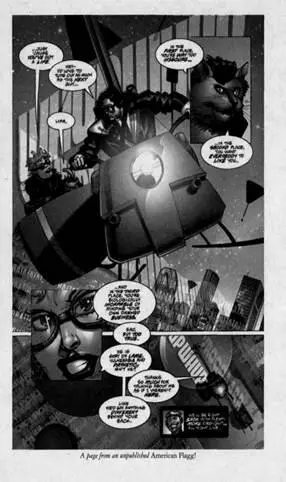
1.
IN A POPULAR MEDIUM that needs to label everyone a journeyman hack or a flaming genius god — like the world of comic-book art — Howard Chaykin is something else: a craftsman, an artisan of pop.
I don’t mean that Chaykin works harder on or takes greater pains with his drawing, though his panels and his layouts bear witness to the pains he takes (like many craftsmen he actually works rather fast). Nor do I mean merely that he brings deeper technical prowess to the comics page (though when it comes to page design, panel arrangement, line control, and the rendering of bodies, faces, clothing, streets, furniture, and interiors, his chops are matchless). Some of the genius gods of comic art, after all, have also been master draftsmen;* and one of the best things about popular media is that, within their capital- and calendar-driven confines, sometimes a hack, half by accident, can turn out something haunting, dreamy, or beautiful. What I’m talking about is a kind — the toughest kind — of balancing act. Taking pains, working hard, not flaunting his or her chops so much as relying on them, the pop artisan teeters on a fine fulcrum between the stern, sell-the-product morality of the workhorse and the artist’s urge to discover a pattern in, or derive a meaning from, the random facts of the world. Like those other postwar East Coast Jewish boys, Barry Levinson and Paul Simon, Chaykin, a man as gifted with a quicksilver intelligence, as irrepressible a sense of verbal play, and reservoirs of rage and humor of apparently equal depth, has spent most of his career seeking, and sometimes finding, that difficult equilibrium.
Читать дальше
Конец ознакомительного отрывка
Купить книгу
